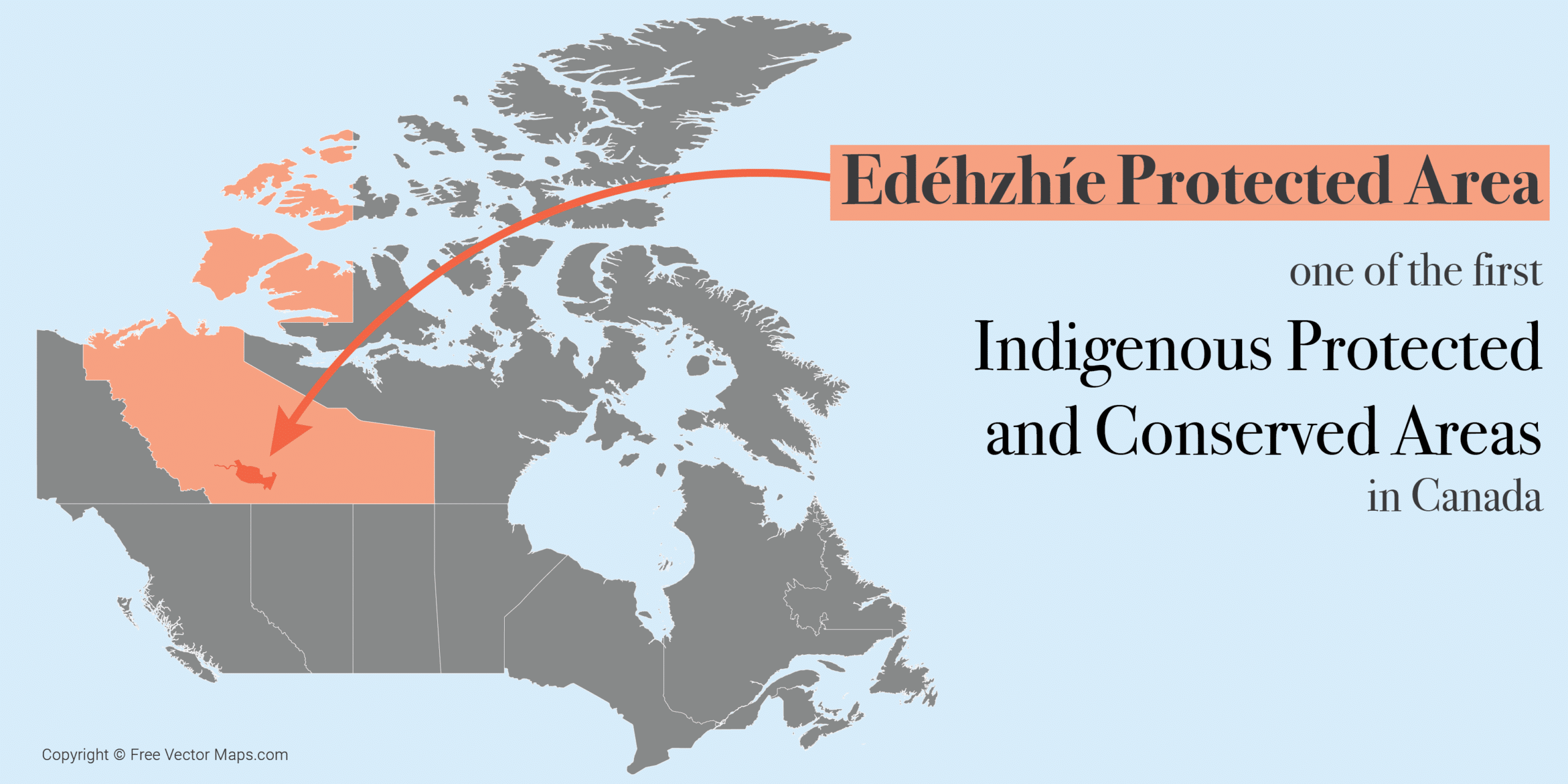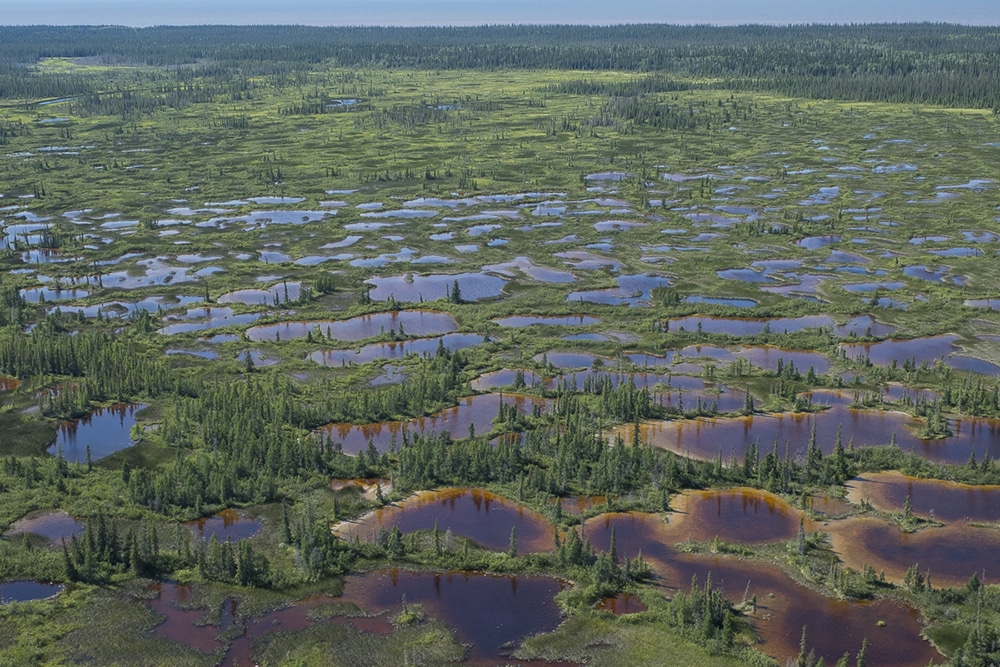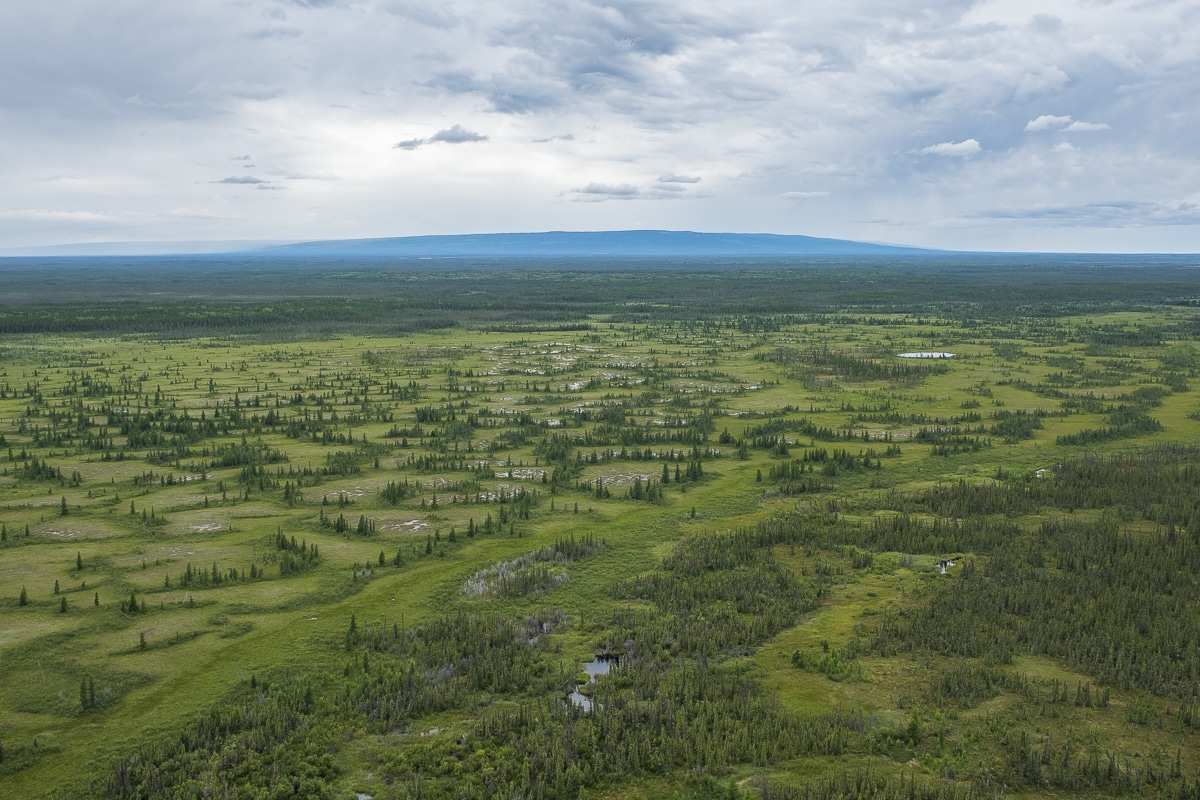A Spotlight in Indigenous-led Conservation: The Edéhzhíe Indigenous Protected and Conserved Area
Edéhzhíe: a proud example of Indigenous-led stewardship

The Edéhzhíe Protected Area (pronounced eh-day-shae) is the first formal Indigenous Protected and Conserved Area (IPCA) established since Canadian governments and Indigenous peoples came together to create the Pathway to Target 1 initiative. This initiative aims to conserve at least 17% of Canada’s land and freshwater by the end of 2020.
Edéhzhíe is located in the Northwest Territories and is a globally recognized example of forward-looking conservation that is collaboratively managed by Indigenous peoples and federal government. This approach of co-management, wherein Indigenous peoples are key decision-makers and leaders, is truly unique among conservation projects across Canada and the world.
At 14 218 km², the Edéhzhíe Protected Area is twice the size of Banff National Park and features a mosaic of boreal forest, wetlands and lakes. The Horn Plateau towers 600 metres over the surrounding plains, holding the headwaters of many freshwater rivers in the area. Edéhzhíe houses herds of species at risk, including woodland caribou and wood bison – both listed as Threatened under the federal Species at Risk Act. Edéhzhíe is the single largest protected area in woodland caribou range in Canada, making it an essential contribution to the recovery of this species.

Traditional knowledge and modern tools
Edéhzhíe is located in the Dehcho region of the Northwest Territories, and its protection was initiated and led by the Dehcho First Nations.
In Dehcho Dene Zhatié, “Dehcho K’éhodi” translates to “taking care of the Dehcho” – which is exactly what the Dehcho K’éhodi Stewardship & Guardian Program strives to do. This program supports the monitoring and management of the Edéhzhíe IPCA.
The Dehcho K’éhodi Stewardship & Guardian Program allows the Dehcho peoples to act as eyes and ears on the ground. It is a regional on-the-land stewardship program informed by Dene Law that works to coordinate research, conduct monitoring and mentor youth in their roles as land stewards and conservation leaders. It also serves to support and strengthen the Dene language.
Drawing upon an intimate understanding of how to care for the land and Western science methodologies for data collection, the Edéhzhíe IPCA amplifies traditional knowledge as a key pillar in managing and preserving the area in the spirit of reconciliation. Under the IPCA agreement, Canada has committed to co-managing the lands in collaboration with the Dehcho First Nations by prioritizing respect for Indigenous rights and practices.

Indigenous-led conservation as a component of reconciliation
For much of Canada’s past, the creation of parks and protected areas resulted in the dispossession of Indigenous peoples from their lands and territories. Indigenous communities were displaced from their lands, waters and resources that they stewarded for thousands of years–and continue to steward, despite the severing of these connections.
In its 94 Calls to Action, the Truth and Reconciliation Commission called upon the federal government of Canada to “repudiate concepts used to justify European sovereignty over Indigenous peoples and lands” and to reform laws, policies and litigation that continue to rely on such concepts.
Projects like Edéhzhíe pave a new way forward for conservation in Canada that prioritizes the knowledge, values and livelihoods of the original occupants of these lands and waters.
The Dehcho First Nations and the Government of Canada work together to manage the Edéhzhíe Protected Area. All management and operation decisions work to uplift the Dehcho Nations’ relationship with the land and are made on the basis of consensus – a decision-making process based in Indigenous society and culture.

A not-so-new era of conservation
Although IPCAs and Indigenous-led conservation efforts have been heralded as a new way to think about conservation, these practices are anything but new. Indigenous peoples have stewarded their lands for time immemorial, and their knowledge is built on millenia of interconnection and interdependence with nature.
Leadership, partnership and collaboration from Indigenous peoples will be undoubtedly crucial to Canadian conservation as our country continues to work towards the commitment to protect 17% of our land and freshwater.
Looking into the future of establishment of parks and protected areas will require looking into the past – understanding that the knowledge required to effectively steward Canada’s environment is already present. It is held within the cultures and ceremonies that have guided Indigenous peoples since Turtle Island began.
Further Reading
More on Edéhzhíe:
- First new Indigenous Protected Area in Canada: Edéhzhíe Protected Areas
- Canada’s new Indigenous protected area heralds new era of conservation
- Edéhzhíe: Canada’s new protected area
More on reconciliation and Indigenous-led conservation:
- Truth and Reconciliation Commission 94 Calls to Action
- Pathway to Target 1 Initiative
- We Rise Together: Achieving Pathway to Canada Target 1 through the creation of Indigenous Protected and Conserved Areas in the spirit and practice of reconciliation.
- Canada working towards new future for Indigenous-led conservation
Make a donation
Move conservation forward in Alberta.
Lasting protection for nature and wildlife in Alberta doesn’t happen overnight (although we wish it did)! Your donation fuels our fight for nature. Donate to support CPAWS Northern Alberta’s conservation efforts.
